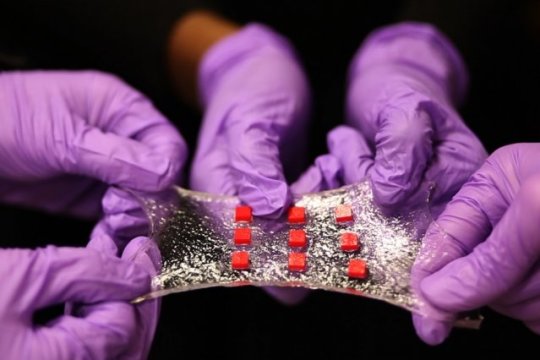Smart Band-Aids Made of Biocompatible and Elastic Hydrogels

Researchers from the Massachusetts Institute of Technology (MIT) have developed a new material to build intelligent band-aids. The elastic, sticky hydrogel can incorporate drug reservoirs and electronic devices that could measure skin temperature or detect drug levels, and respond by releasing more medicament or lighting up LEDs. The study was published in the journal Advanced Materials.
Current artificial hydrogels are fragile and stiff, and adhere poorly to surfaces. They are mainly used as biodegradable materials for short-term treatments. Many research lines in health monitoring or drug delivery would benefit from a durable, flexible hydrogel that could embed hard electronics to make them compatible with soft and wet biological environments.
Selected biopolymers confer elasticity and robustness to the hydrogel
Spurred by this need, Professor Xuanhe Zhao’s team started to work on the development of strechable hydrogel electronics. They generated a matrix of water and biopolymers that conferred elasticity and robustness, with a stiffness comparable to the one found in human soft tissues. The new material could also bind nonporous surfaces like metals, silicon, glass, and ceramic; this property allowed to embed LED light arrays and wires. The matrix was flexible enough to bend with the elbow, where the hydrogel stretches together with the body. The electronics still functioned after being adhered to a knee or elbow and stretched with them. The researchers also tried embedding temperature sensors and drug reservoirs and conducts, and they all functioned after stretching tests. Based on the results on these experiments, the researchers affirm that a smart band-aid could be developed, one that could release one or several drugs from its reservoirs, and direct them to the place indicated by sensors through a pattern of tubes or conducts drilled in the matrix.
The hydrogel could be used inside the body also, as a glucose sensor. The biocompatible materials would avoid the body’s immune reaction against the electronic parts, so that implants wouldn’t need to be replaced often, as is the case now. Future uses include coating neural sensors with the hydrogel.
Source: MIT


